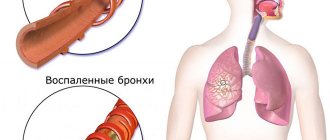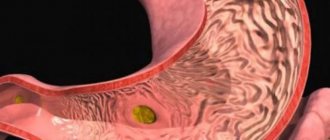Hepatitis C is a serious disease characterized by inflammation of the liver tissue caused by the HCV virus. Often the patient does not realize that he is developing a disease. This is very dangerous, because after six months hepatitis can become chronic. Cirrhosis or liver cancer may also develop against the background of this disease.
Many people wonder whether hepatitis can be cured at home. Doctors say that therapy should include a whole range of measures: the use of medications, dietary adjustments, giving up bad habits, and a sufficient amount of physical activity.
Folk remedies in this complex act as maintenance therapy.
In this article you will learn how to treat hepatitis C at home.
Is it possible to cure hepatitis C completely?
Hepatitis C is not a death sentence. With the help of modern antiviral drugs, up to 90% of patients are cured, provided there is high access to modern methods for diagnosing the disease and treatment. In some patients, the disease can be stopped, which significantly reduces the risk of developing cirrhosis and primary liver cancer.
Rice. 2. In 20 - 30% of cases, patients with hepatitis C develop jaundice.
Additional drugs
While treating liver hepatitis with high quality Indian medicines, it is necessary to medicinally help cure hepatitis C with the help of appropriate medicines. HCV therapy should not be limited to taking antiviral drugs. Otherwise, the damaged organ will not recover.
To restore the liver, you should take medications belonging to the following groups of medications:
- Hepatoprotectors are medications that promote rapid recovery of liver cells in patients with HCV. Examples - Hepasky, Galstena, Hepa-Merz;
- Choleretic – promote the excretion of bile into the intestines, facilitating the digestion process. Preparations – Hofitol, Artihol, Allohol;
- Detoxification – perform an absorbent function, removing toxic compounds from the patient’s body. Medicines – Hepatoklin, Hepatosan.
Important! In the case of hepatitis C, you cannot self-medicate. The use of any drug must be agreed with the attending physician.
Preparing the patient for treatment
Patients with both acute and chronic forms of hepatitis C are subject to treatment.
Before it begins, the degree of liver damage is assessed, for which the stage of the disease and basic virological characteristics (viral load, virus genotype, and in the first genotype, virus subtype) are established. Determining the degree of liver cirrhosis requires special attention, since patients with this pathology respond inadequately to therapy.
Serum levels of liver enzymes, bilirubin, albumin, INR + prothrombin time, glomerular filtration rate and creatinine are measured. A general blood test with leukocyte formula and platelet count is performed. Concomitant pathology is assessed.
Rice. 3. Liver cirrhosis due to hepatitis C. The disease develops slowly over many years.
Features of the disease
Before you find out which medications you should take for hepatitis B, you need to learn more about the disease itself. This is a fairly common type of hepatovirus that is mainly transmitted through infected blood . However, other natural fluids and secretions of the human body can serve as a conductor for the virus:
- Saliva and nasopharyngeal mucus;
- Sperm and vaginal discharge;
- Menstrual flow;
- Vomit, urine and feces.
Regardless of whether there is a cure for hepatitis B, the disease is extremely contagious . In the external environment, the period of pathogen activity can last up to 7 days. All this time, the virus is potentially dangerous to others.
The incubation period of the disease lasts from 30 to 180 days. After this, the active phase of the disease begins, during which drugs for hepatitis B are most relevant. Often this stage can occur without obvious symptoms, however, in some cases, IGB can be identified by the following signs:
- Yellowing of the skin and whites of the eyes;
- Pain in the liver area;
- Urine that has the color of dark beer;
- Discolored fecal matter;
- General condition similar to influenza.
Unlike other types of hepatovirus, HBV develops rapidly and rapidly . If hepatitis B is not treated with antiviral drugs, over time the patient is at risk of cirrhosis, fibrosis, and even liver cancer. In some cases, liver failure, which can be fatal, can occur even in the earliest stages of this dangerous disease.
How to treat hepatitis C
Treatment of hepatitis C with interferon
For quite a long time, chemotherapy using interferon and ribavirin was the gold standard in the treatment of hepatitis C. However, it turned out to be the least effective in patients infected with hepatitis C viruses genotype 1 and severe liver fibrosis. In addition, the treatment required weekly injections for 48 weeks, the cure rate reached only 50%, and the drugs often caused adverse and sometimes life-threatening reactions to the patient. Today, WHO recommends the use of hepatitis treatment regimens with interferon only in patients with genotype 5, 6 or 3 with liver cirrhosis.
New standards in the treatment of hepatitis C with direct antiviral drugs (DAAs)
Currently, antiviral drugs with proven activity to varying degrees are recommended for the treatment of hepatitis. Since 2014, chemotherapy regimens without interferons began to be registered and recommended for use. The inclusion of direct-acting antiviral drugs (DAAs) in treatment regimens has given many patients who previously had no chance of recovery a chance of cure. DAAs are not only highly effective, but also have minimal impact on quality of life and are well tolerated by patients. Direct-acting PVP combinations help overcome drug resistance. The duration of taking medications has been reduced, they have become convenient to use, withdrawal rules have disappeared, and the range of people eligible for treatment with concomitant pathologies has expanded.
Standards of patient care in the modern world are changing rapidly. Its cost (“medicine basket”) is high. Antiviral drugs in Russia are not provided to patients free of charge. The majority of infected people are unable to purchase expensive foreign antiviral drugs. In a number of countries, generics are used to treat diseases—medicines that are placed on the market after the patent protection period for the original drugs has expired. Their use significantly reduces the cost of treatment.
In addition to being expensive, PVPs have a number of side effects, which in some cases makes it impossible to get a positive result. Autoimmune diseases, pregnancy, alcoholism and blood diseases are absolute contraindications to antiviral therapy. The effectiveness of therapy is reduced in persons with immunosuppression, in persons with hepatitis C + B, when infected with genotype 1b virus, in long-term chronic course of the disease, in patients with autoimmune diseases and obesity.
A patient with hepatitis C should be constantly under the supervision of a hepatologist, gastroenterologist and infectious disease specialist. If necessary, the patient is observed by other specialists.
Principles for prescribing antiviral drugs
When a disease is identified, an interview is conducted with the patient, the purpose of which is to create in the patient a conscious desire to be treated and an optimistic attitude towards the upcoming long-term therapy. Patients should know the features of the clinical course of hepatitis, rules of conduct in everyday life, the specifics of antiviral drugs and the difficulties associated with this (duration of taking drugs, their side effects and high cost).
- Combinations of antiviral drugs are used to treat the disease.
- To avoid the development of resistance to the drugs used, it is necessary to periodically change the treatment regimen.
- On average, the duration of taking antiviral drugs is 6 - 18 months.
- In order to correct the undesirable effects of the therapy, the patient is required to visit a specialist monthly and undergo the necessary laboratory tests.
Rice. 4. The photo shows a macroscopic specimen. Liver cirrhosis is a serious complication of hepatitis C.
Current prevalence of hepatitis
Hepatitis C is an acute or chronic inflammation of the liver that is caused by the hepatitis C virus (HCV). The infection is transmitted primarily parenterally through contaminated blood. Today, many developed countries - Canada, the USA, Germany - are actively researching the development of a vaccine against HCV. Its release would significantly reduce the risk of HCV infection.
Epidemiology
According to the European Association for the Study of the Liver (EASL), more than 150 million people are registered worldwide with chronic hepatitis C. The disease has almost no symptoms, and if left untreated, it provokes life-threatening consequences:
- cirrhosis of the liver;
- hepatic encephalopathy;
- hepatocellular carcinoma;
- portal hypertension.
More than 3.5 million people become infected with hepatitis C every year. According to estimates, 4.7 million patients and carriers of HCV live in the Russian Federation.
Up to 15-45% of infected people spontaneously clear the virus even without drug treatment. In other cases, HCV provokes acute or chronic inflammation of the liver. In 80% of those infected, the disease becomes indolent. Every year, at least 350,000 patients die from complications caused by hepatitis. People with concomitant HIV infection and hepatitis B are more susceptible to severe complications.
Geographical distribution
People infected with HCV have been registered in almost all corners of the Earth. Hepatitis is most common in the Eastern Mediterranean. A viral infection was detected in 2.3% of the population in this region.
To date, 8 genotypes of RNA viruses have been well studied, each of which has many subtypes. Their distribution largely depends on the region. In the Russian Federation, only the first 4 genotypes of HCV are more common.
Until recently, hepatitis C was very difficult to treat. But in 2014, there was comforting news in the field of world medicine. Two American pharmaceutical companies have managed to develop antiviral drugs that directly combat the infectious agent.
Medicine for hepatitis C in interferon-free treatment regimens
Interferon-free treatment regimens use direct antiviral drugs. They are based on substances that disrupt viral replication (they affect viral proteins and nucleic acids). All DAAs are divided into several groups.
NS3/4A protease inhibitors
- First generation PVPs include: Boceprevir and Telaprevir (first wave drugs), Simeprevir, Asunaprevir, Faldaprevir, Paritaprevir, Danoprevir and Sovaprevir (second wave drugs).
- Second-generation PVPs include: Grazoprevir, Norlaprevir and ACH-2684.
The antiviral drugs Simeprevir and Paritaprevir were approved in the European Union for the treatment of hepatitis C in 2020.
Under the influence of NS3/4A prosthetic inhibitors, the hepatitis C virus stops reproducing. Simeprevir is easy to use, has a good safety profile, and is active against virus genotypes 1, 2 and 4. Grazoprevir is a second generation drug. Active against all genotypes of viruses. Its resistance barrier is higher than that of first-generation drugs.
NS5A polymerase inhibitors
- First generation PVPs include: Daclatasvir, Ledipasvir, Samatasvir, Ombitasvir, ACH-2928 and PPI-668.
- Second generation PVPs include: ASN-3102, GS-5816 and Elbasvir.
The antiviral drugs Daclatasvir and Ledipasvir were approved in the European Union for the treatment of hepatitis C in 2020.
NS5A polymerase inhibitors lead to a decrease in viral load from the first days of treatment. The antiviral effect occurs as a result of blocking the replication of viruses, their assembly and release from cells. First generation drugs are effective against different genotypes of viruses. They have a low resistance barrier, especially against genotypes 1 and 3. The DAA Daclatasvir has the greatest antiviral activity in its class. Included in treatment regimens with and without interferon.
NS5B polymerase inhibitors Nucleose(t)ide
First generation drugs include: Sofosbuvir, FLS-2000, Mericitabine, Dasabuvir, AVT-072, Beclabuvir, Setrobuvir, Tegobuvir and Filibuvir.
The NS5B polymerase inhibitors Nucleose(t)ide Sofosbuvir and Dasabuvir were approved in the European Union for the treatment of hepatitis C in 2020. Registered in the Russian Federation on March 25. 2020
PVPs of this group, penetrating into infected cells, bind to RNA-independent polymerase and thereby disrupt the process of viral replication. They have high antiviral activity against all genotypes and a high resistance barrier.
Sofosbuvir is used in treatment regimens as the main drug with NS3/4A, NS5A inhibitors and ribavirin. Infectious disease doctors believe that generic Sofosbuvir also provides a good therapeutic effect.
The development of some non-nucleoside NS5B polymerase inhibitors (Deleobuvir (BI), Tegobuvir and Filibuvir) has been discontinued due to a number of negative characteristics.
Treatment regimens for hepatitis C
The prescription of certain antiviral treatment regimens depends on the genotype of the virus, the degree of liver damage and the results of previous therapy. Below are the 2020 American Association for the Study of Liver Diseases Guidelines. These regimens are recommended for use in persons who have not previously received antiviral drugs, in persons with undeveloped resistance as a result of the use of standard treatment regimens, including Interferon and Ribavirin.
Treatment regimen for hepatitis C genotype 1a
- Sofosbuvir + Ledipasvir 12 weeks.
- 3D therapy (Dasabuvir + Ombitasfir + Paritaprevir + Ritonavir as a pharmacological booster) with or without Ribavirin for 12 weeks.
- Sofosbuvir + Simeprevir 12 weeks.
- Sofosbuvir + Veltapasvir 12 weeks.
- Sofosbuvir + Daclatasvir 12 weeks.
- Grazoprevir + Elbasvir 12 weeks.
Treatment of hepatitis C with Sofosbuvir and Daclatasvir
- Sofosbuvir and Daclatasvir are used to treat viral hepatitis genotype 1. The combination of these drugs and their generics demonstrated excellent treatment results - from 86 to 100%.
- The duration of treatment with Sofosbuvir + Daclatasvir was reduced to 14 - 24 weeks. The drugs are used once a day, 1 tablet: Sofosbuvir 400 mg + Daclatasvir 60 mg.
- Good tolerance.
- Minimal side effects: headache, weakness, decreased appetite and nausea.
Treatment regimen for hepatitis C genotype 1b
- Sofosbuvir + Ledipasvir 12 weeks.
- 3D therapy (Dasabuvir + Ombitasfir + Paritaprevir + Ritonavir as a pharmacological booster) 12 weeks.
- Sofosbuvir + Simeprevir 12 weeks.
- Sofosbuvir + Daclatasvir 12 weeks.
- Sofosbuvir + Veltapasvir 12 weeks.
- Grazoprevir + Elbasvir 12 weeks.
Treatment regimen for hepatitis C genotype 2
- Sofosbuvir + Daclatasvir 12 weeks
- Sofosbuvir + Veltapasvir 12 weeks.
- Grazoprevir + Elbasvir 12 weeks.
Treatment regimen for hepatitis C genotype 3
- Sofosbuvir + Daclatasvir 12 weeks
- Sofosbuvir + Veltapasvir 12 weeks.
Rice. 5. Combined PVP for hepatitis C: Sofosbuvir + Ledipasvir (photo on the left). Sofosbuvir + Veltapasvir (photo on the right).
Rice. 6. Combined drug Zepatir. Contains Grazoprevir + Elbasvir. The drug is approved by the FDA and the European Commission for the treatment of chronic hepatitis genotypes 1 and 4.
Are there any side effects
The advantage of antiviral medications is the low number of side effects. During treatment, patients complain of fatigue, drowsiness, and headache. However, these reactions are less pronounced than with the use of interferons.
Side effects are often caused by the wrong combination of drugs. Problems may arise if other drugs are taken at the same time during drug therapy. When taking Sofosbuvir tablets together with Interferon and Ribavirin, patients most often complain of breathing problems, cough, insomnia, blurred vision, digestive problems, high fever, and dry skin. Laboratory studies show a decrease in the number of platelets and hemoglobin. One of the reactions to this combination is cramps and back pain. Severe weight loss, dehydration and asthenia are noted. The patient cannot calmly tolerate strong sounds and strong smells.
If the Sofosbuvir-Ribavirin regimen is used, the patient's adverse reactions are less pronounced. There is irritability, fatigue, patients report insomnia and nausea. Blood tests show increased bilirubin and decreased hemoglobin.
To reduce negative reactions of antiviral medications, the patient is prescribed a diet excluding fried and fatty foods, as well as alcohol. Side effects increase with the following pathologies:
Heart diseases
- digestive problems;
- renal dysfunction;
- presence of problems with the heart and blood vessels;
- mental disorders;
- chronic respiratory diseases.
The simultaneous use of Sofosbuvir with Boceprevir and Telaprevir, which are also used to treat hepatitis C, is not allowed.
Reverse transcriptase inhibitors affect the bone marrow and can cause pancreatitis. When treated with such drugs, the patient’s mental state worsens, and problems with the heart and thyroid gland arise. Cases of renal failure have also been reported. The consequence of uncontrolled use can be cardiac arrest.
Any antiviral drug can cause an allergic reaction. If such a sign appears, therapy with its use should be discontinued and replaced with another medicine.
Many drugs have been developed to treat hepatitis C. Doctors prefer to prescribe them in combination. They differ in effectiveness and severity of negative reactions. When taken correctly, side effects do not occur or they are mild.
In the chronic form of hepatitis C, antiviral therapy (AVT) cannot be avoided. The main goal of such treatment is to relieve the patient of the symptoms of the disease for a long time. The action of special drugs is aimed at eliminating inflammatory processes in the liver. However, the level of virus in the blood is not determined. Antiviral therapy for hepatitis C helps achieve stable remission in most patients.
Pathogenetic therapy of hepatitis C
- In case of hepatitis C, it is pathogenetically justified to prescribe immunomodulatory drugs (Interleukin-1 beta) to patients.
- For anemia, drugs that stimulate erythropoiesis (Epocrine) are prescribed.
- For severe symptoms of intoxication, it is recommended to administer glucose-electrolyte solutions and hemodez.
- For the malignant course of hepatitis C, glucocorticoids, protein preparations, amino acid mixtures, antihemorrhagic agents, protease inhibitors, and enterosorbents are prescribed.
- In case of cholestasis development, Ursofalk is prescribed.
- The treatment regimen must include hepatoprotectors, enterosorbents, and bacterial preparations that normalize the intestinal microflora.
- Along with the use of modern antiviral drugs, extracorporeal hemocorrection significantly increases the effectiveness of treatment.
Rice. 7. Primary liver cancer. The most severe consequence of hepatitis C.
Contraindications
Antiviral therapy has contraindications. It will be ineffective if treatment with their help has already been used, but did not provide a positive result.
Antiviral therapy for hepatitis C is contraindicated in the following categories of patients:
Pregnancy
- prone to depression;
- pregnant women;
- those who are allergic to components;
- patients with ischemic disease;
- patients with thyrotoxicosis;
- those who have undergone organ transplantation;
- patients with autoimmune hepatitis;
- patients with diabetes mellitus.
Immunomodulators are also contraindicated in patients with multiple sclerosis and bronchial asthma.
Contraindications for the use of Ribavirin, in addition to the above, are heart and kidney problems.
During treatment with antiviral drugs, it is necessary to use contraception. If therapy is necessary for a nursing mother, the child is transferred to artificial feeding, since it is unknown whether these medications pass into breast milk or not.
Therapy is ineffective if the patient uses alcohol or drugs. Antiviral drugs are allowed to be taken no earlier than 3 months after giving up bad habits. Since antiviral therapy affects the nervous system, causing fatigue, the patient is prohibited from driving or performing work that requires high concentration.
Medicines are prescribed with caution to elderly people, children, and patients with cirrhosis. Not all antiviral medications can be used to treat such categories of patients.
Cirrhosis of the liver
Basic principles of therapy
Today, AVT is considered the most effective way to treat hepatitis C. Many patients can count on a positive result and complete remission. At the same time, there are practically no relapses.
The effectiveness of treatment depends on the following factors:
- gender and age of the patient;
- the degree and speed of development of the pathological process;
- type of virus;
- duration of infection.
The hepatitis virus sequentially goes through several stages - from 0 to 5. The last stage is characterized by total liver damage and the onset of cirrhosis. After this, it will no longer be possible to completely restore the organ.
The choice of medications is influenced by the stage of development of the disease. The drugs should be selected by a doctor who, depending on the patient’s condition, develops an effective regimen. If stage zero occurs, then AVT is rarely used. Its use is possible in the presence of symptoms and increased dynamics of the virus.
Tests to determine ALT and AST, also called liver tests, will help determine the need for treatment. These studies will reveal abnormalities in the functioning of the liver.











